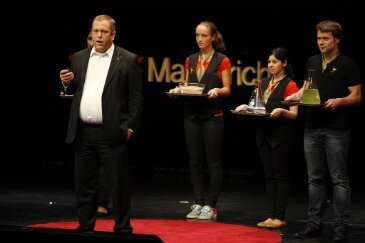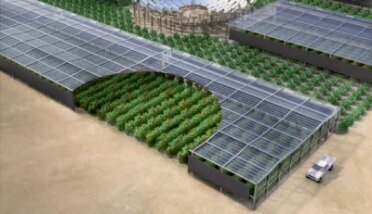Viking Forest Project » Welcome To Shotley
Content
These will be planted as a spiral of ‘Minor Oaks’ in parks, school grounds and other open spaces from the city centre out into the county, joining the heart of Nottingham to the oaken heart of Sherwood Forest. These oaks will be a trigger for building copses, community gardens and forest schools, creating a mix of habitats for nature to survive and wildlife to thrive. Our ambition is for this project to underpin the teaching of environmental and rural skills in all our schools as the legacy of Sherwood Forest for hundreds of years to come. The Sounds of the Forest project aims to connect people with trees – and one another – by gathering the sounds of woodlands and forests from across the world to create a ‘soundmap’. Uniquely, in this area, Andean bears have adapted to rear their families in seasonal dry forest.
With 50 million trees to plant, we need all hands on deck in order to create the Northern Forest. We’re working with Community Forests on regular public tree planting events and we’d love you to be involved. Plant trees Subsidised trees and protection If you’re planting 500+ trees, we can supply trees and protection subsidised by up to 85% if you plant yourself. Costs are subsidised by up to 70% if you’d like us to arrange a contractor to plant them. This is your chance to help us grow the Northern Forest, make a difference and create something special for the people in and around northern England. Over 70 species found in the UK, from all the native trees to the common non-natives. The habitat improvements are not only important for fish, but water voles and small pearl bordered fritillary butterfly will also benefit.
Projects
Our Facebook ground has been growing at a rapid pace since we started and we hope to get as many people in Darlington as possible to help us spread the word. But this hasn’t stopped organisers from launching their ambitions new mass participation audio project. The Forest for Cornwall is part of Cornwall Council’s response to climate change and striving towards Cornwall becoming carbon neutral.
It’s our ambition to significantly increase all forms of canopy cover throughout Cornwall, whilst strengthening the protection of our existing backbone of trees, woodlands and hedges. Thanks to a funding boost from the Woodland Trust, Forest for Cornwall will be supporting more communities to plant trees. The older children in Shotley primary school planted over twenty trees, including small-leaved lime, alder, oak and hornbeam and in the spring of 2005 a further three hundred trees were planted. Most of the oaks have been grown on from acorns gathered from local, veteran trees. Viking Forest Project was born out of several meetings with the Green Light Trust, an environmental charity that works locally in schools and communities.
North York Moors
The National Park Authority are coordinating the delivery of the project with the Forestry Commission and National Trust who own the majority of the land in the project area. We provide volunteering opportunities for adults with all levels of skills and experience. We are always excited to hear from anyone interested in volunteering or working with our organisation. We are also actively seeking out new corporate partnerships to help us further our charitable aims for the benefit of the environment and local community.
When the Northern Forest delivers its full potential, future generations will have somewhere beautiful and resilient in which to live, work, explore, learn and play. We have carried out a substantial amount of habitat work on Forestry Commission land in Langdale Forest which should benefit water quality, water voles and small pearl-bordered fritillary. In the future we will continue with habitat improvements on Forestry Commission land and will also be starting on Thompsons Rigg which is owned by the National Trust. Through the installation of woody debris dams, tree thinning and scrub clearance it is hoped that the status of the watercourse will improve from ‘poor’ to ‘moderate’.
Welcome To Darlington Forest Project
The forest also has the highest concentration of endangered Udzungwa red colobus monkeys anywhere and is an important dry season refuge for elephants of the Selous Game Reserve. Magombera is also one of two known localities of the newly described Magombera chameleon , discovered by a team of scientists including Flamingo Land’s Director of Conservation Science, Dr. Andy Marshall. Alongside routine forest monitoring, research projects under UFP are aiming to improve scientific knowledge of the region’s forests, animals and people, that will help improve forest conservation. Tanzanian Research Assistants and Flamingo Land zoo keeper Holly Garson are together researching the dietary needs of the two species of colobus monkey resident to Magombera forest. The Udzungwa red colobus and Angolan black and white colobus live together in the same social groups, and so our research is aiming to understand how these species divide their resources. Our primate research also extends to the critically endangered kipunji monkey discovered new to science in 2004 and one of the world’s rarest primates. The reason for its restricted range is a mystery, and so our surveys are aiming to determine the role of habitat.
It spans across parts of Derbyshire, Leicestershire and Staffordshire and aims to link the two ancient Forests of Charnwood and Needwood. With a history of coalmining and heavy industry, the landscape is now that of rolling farmland, ancient forests and new planted woodlands. Its main towns and villages include Burton upon Trent , Coalville and Swadlincote and the historic town of Ashby-de-la-Zouch. It can take from 1 to over 3 years from acquiring a piece of land to planting trees and shaping the Forest on the ground. We’re planting tomorrow’s great native woodland, one tree at a time.
In that time we’ve planted over 1,200 young trees & 2 medium size willow trees in the South Park. We’ve also worked closely with 3 schools to educate and encourage appreciation of nature in our children. At the schools, we’ve planted willow structures and planted fruit trees & legacy trees that the children can enjoy for many years to come. This is only the beginning and we’re already planning for our next planting season starting in October 2020. But the community here have always shown a deep respect and love of their forests, even prepared to see loss of a goat to a puma – they show a modern ‘Moche’ resilience.
The North of England has significantly less woodland cover than the rest of the country, but not for much longer. With our partners we are planting 50 million trees and transforming the landscape of northern England. The Food Forest Project is a small, newly formed organisation that has been established to help communities to plant food forests. It’s also about providing food and habitats for wildlife – so it’s a win–win situation for all. The Spectacled bear resides in three Andean ranges of Peru including a portion of the Pacific coast desert. Although commonly found in high elevation forests and upper montane humid forests as in our Neblina reserve in Ecuador, the species can also be found in the dry forest habitat in northern Peru.
We want to see habitats thrive, planting rates soar, trees and woodland valued and appreciated by all, and our ancient woodlands better protected. The community forests in the north – The Mersey Forest, City of Trees, White Rose Forest, and HEYwoods – are working with the Woodland Trust to bring the Northern Forest to life. We reclaim used scaffolding boards, as well as other wood from the building industry. Old boards become planters in greening projects and tables and shelving in peoples’ homes and businesses. Used floorboards are made into biodiversity boxes, providing much needed space for animals to nest. Our aim is to double the tree cover in and around Darlington by the year 2030. We want to make sure we keep planting trees and improve the amount of trees in Darlington to counteract the deforestation which has and is happening.
Forest School
It is thought that some spectacled bears live exclusively in dry forest habitat. Regional climate changes have seen a swing from drought to flash-flooding. This project is part of a wide collaboration across forest communities, traditional and intensive agriculture in order to reconcile dry forest conservation and restoration with sustainable development and climate change adaptation.
We are restoring one of the largest conifer plantations in the Lake District National Park to native woodland, for the benefit of people, nature and our climate. In order to gather the sounds, Timber organisers are asking people to get involved by visiting their local forest or woodland and recording one minute of the sounds that they hear. The agreement includes a strong supporting commitment from Rainforest Concern, SBCP, and SERNANP in helping construct Andes-to-coastal conservation to protect biodiversity, provide ecosystem services and income to its communities. At the Museo de Túcume the project is teaching propagation and planting of native useful trees. Seasonally Dry Forests in the Latin American tropics are now a conservation priority with only around 10% remaining in many countries. Tropical Dry forests are found where the rainfall season is short so many species are unique and specialised.
Migrating down to steep escarpments to dry forest lowlands, they fatten-up gorging on fruit such Sapote , only to return to upper seasonal dry forest to feed on Pasayo , figs and bromeliads. The forest is also unique and includes nationally threatened species such as Palo Santo and Hualtaco . Our project partners have excelled in promoting the conservation and research of spectacled bears in the region. Conservation and restoration of dry forests is not just vital for its unique species, but has lasting economic benefits though provision of soil fertility, food, fuel, medicine and water regulation. Unregulated deforestation, industrial agricultural expansion and infrastructure are impacting dry forest but also offer livelihoods to local communities.
This is important to ensure successful conservation of habitats, however only a very low proportion of protected areas in Africa have long-term monitoring programs. Under the supervision of Project Co-ordinator Samuel Mtoka, UFP’s Research Assistants are surveying illegal forest use such as cutting of trees, setting of fires, and hunting. “Indicators” are also monitored that represent the conservation value of the forest, including species of conservation concern such as rare monkeys and small forest antelopes. The size and species of trees in the forest is also assessed every two years as these are the structure of the forest. The results of monitoring are used as an indicator of management success, and a tool for local education. A large proportion of modern society has lost its connection to the natural environment.
It has been calculated that a large quantity of high-quality and totally organic food can be produced in a small area with minimum wastage. Any excess products can be recycled naturally to further enrich the soil.
- A grant secured by the charity will enable it to kick-start a ground-breaking project which will support green recovery in the region.
- When the Northern Forest delivers its full potential, future generations will have somewhere beautiful and resilient in which to live, work, explore, learn and play.
- Each year UFP also assists school children with tuition fees so that they can attend secondary school.
- Unregulated deforestation, industrial agricultural expansion and infrastructure are impacting dry forest but also offer livelihoods to local communities.
Discover our award-winning zoo with over 140 species of mammals, reptiles and birds. Keep in touch with the nature you love without having to leave the house.
Flamingo Land’s Udzungwa Forest Project is an integrated conservation, research and education project based in Tanzania. The project is aiming to break new ground for zoo-funded conservation by bridging the typically large gap between research and conservation. Whatever you choose to give, donating through JustGiving is secure, quick and cost effective, so more money goes directly towards achieving our vision for woods and trees. We’re working with The Mersey Forest, City of Trees, White Rose Forest, HEYwoods and the Community Forest Trust to create a new Northern Forest. This will increase woodland cover while bringing endless benefits and opportunities to the people of the North.
It’s by no means a comprehensive list, although over time we will continue to add details of further projects. If you would like to know more about a particular strand of our work, please contact us. Over sixty species of wildflower can be seen throughout the season with good numbers of primroses during the spring. There is a single cut of the vegetation once the wildflowers have set their seed and this is raked away to reduce the fertility of the land.













